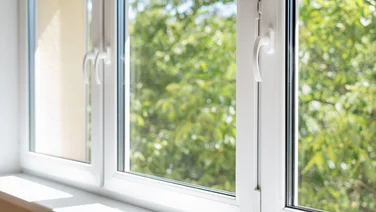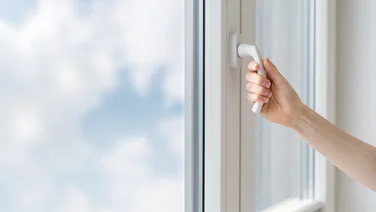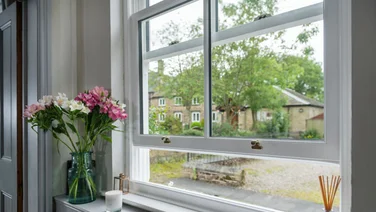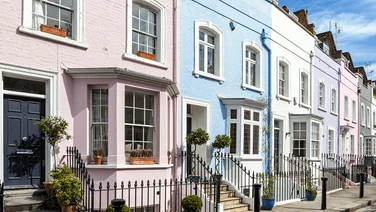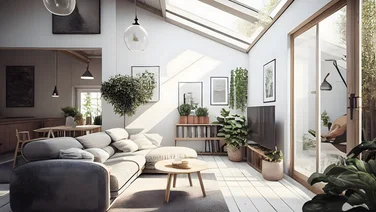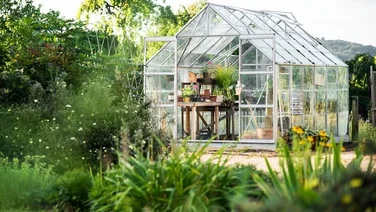- UPVC double glazed windows are designed with thinner frames
- UPVC windows are typically the most economical material
- UPVC is a low-maintenance plastic material that has a high level of durability
- They cost around £500 per window to install
UPVC double glazed windows, or Unplasticised Polyvinyl Chloride, is a type of window designed with thinner frames compared to traditional windows. This allows for a larger glass window to be used.
Because of this, uPVC windows are typically the most economical material for windows, as noted by Everest – Windows.
They also stop heat from escaping your home just as well, helping you spend less on your energy bills.
But what else should you be aware of before installing them? To help, we’ve put together this guide on uPVC double glazed windows that will explore costs, different types of uPVC windows and the advantages and disadvantages of them.

What are uPVCdouble-glazed windows?
- UPVC is a low-maintenance plastic material that has a high level of durability when used to frame windows
- You make uPVC window frames by heating up the plastic material and pouring it into a mould, where it takes shape
- UPVC is also an excellent environmentally-friendly addition to your property. It has very low thermal conductivity, meaning it reflects more heat back into your home. Timber, on the other hand, has a higher thermal conductivity, and as heat from your home radiates through timber-frame windows, the wood absorbs the heat and then leaks it outside.
- The uPVC’s window’s long lifespan and low cost has made it a common sight in homes across the world.

What type of uPVC double-glazed windows should I choose?
The type of uPVC double glazed window you should choose should depend on how much you’re willing to spend and what will best suit your needs.
We recommend getting different quotes to make the best decision for you, which you can get by filling in this form.
As an overview, however, here are the different types of uPVC double glazed windows:
- Casement windows: The most versatile frames used in UK homes. They have a variety of configurations to suit different properties. You can have single, double and triple glazing in casement windows, depending on the size of the frame. You can install different openers, with the ability to open on one side, both sides, from the top or across the full frame
- Sash windows: These are, more often than not, two windows placed with one behind the other, and usually slide up and down, crossing over each other. But some have one fixed panel, with the other sliding over it. There are also tilt and turn sash windows. Sash windows are more popular among period properties, and older sash windows are known for ageing poorly, with gaps appearing over time, resulting in draughts and reducing your home’s insulation
- Bay windows: These protrude from a building, adding more floor space or a window bay with a deep sill. These are some of the most-popular window choices for Victorian and Edwardian homes, but some install on new builds, too. If you install a bay window at the front of your property, you will need planning permission.
- Rooflight and skylight windows: Dormer and skylight windows are the two types of windows you can install on your roof. A dormer is a box protruding from the main roof, creating additional space and usually includes a window. Skylight windows are built into the design of the roof, angled to let in the maximum amount of light.
As a material, however, uPVC is much more cost effective than wooden frames. Here are the average uPVC and wooden frame costs for different window styles:
| Window style | UPVC | Wood |
| Casement | £200 – £900 | £600 – £1,500 |
| Sash window | £700 – £1,100 | £1,100 – £1,900 |
| Bay window | £1,100 – £1,500 | £1,900 – £2,250 |
Data from Windows Guide, 2022
Costs of uPVC double-glazed windows
UPVC double glazed windows cost anywhere from £1,550 to £11,000, and are usually based on the number of windows you need. The price per window averages at £500.
If you’re interested in financial help, including double-glazing grants for over-60s, have a look at our guide.
Here is a table showing the typical costs depending on the size of your property.
| Property type | Number of windows | Cost range for uPVC windows |
| Flat | 4–5 | £1,550-£2,750 |
| Small house | 8–9 | £3,300-£4,950 |
| Medium-sized house | 10–12 | £4,900-£7,600 |
| Large house | 15–18 | £7,200-£11,600 |
For prices specific to your home and needs, we recommend filling in our form where our trusted supplies can help.
If you want to know how much new windows might set you back, look at our double glazing cost calculator.
Advantages and disadvantages
Like most things, there are both advantages and disadvantages. Here’s a list if you choose to install uPVC windows:
- UPVC windows are more durable than timber window frames. Buying uPVC windows means you’re unlikely to have to replace them for many years. uPVC is a very strong material that won’t warp or lose its shape for at least 20 years.
- UPVC is great at keeping heat in. Well-insulated homes use less energy to stay warm, helping to reduce your bills and keep your carbon emissions down.
- UPVC windows have a high level of fire resistance, helping stop the spread of fire where a wooden window frame would simply burn. Also, uPVC frames keep their shape in the event of a fire, giving occupants of the building an avenue for escape.
- Most uPVC double glazed window frames are reinforced with galvanised steel, which makes them increasingly difficult to be broken into or forced open.
- From an aesthetic point of view, uPVC windows have very few customisation options. Despite advancements, you’re limited to basic textures only.
- Even though uPVC windows are durable, their lightweight frames mean they’re prone to sagging, where the weight of the window starts to bend the frame.
Should I get uPVC double-glazed windows?
As explained above, uPVC windows are some of the most durable ones currently available on the market, and you’re unlikely going to need to replace them for at least 20 years.
From an environmental perspective, uPVC is one of the best choices you can make. They are not only fire resistant, but they help to keep heat inside your home, which will have a positive effect on your bills and your carbon footprint.
Costs are low, too. The average cost of a uPVC window is between £1,550 to £11,000 depending on the type of home you have. You can also utilise grants available, like ECO4 and The Home Energy Grant, to help offset the initial cost.
Summary
- The type of uPVC double glazed window you should choose should depend on how much you’re willing to spend and what will best suit your needs
- uPVC is much more cost effective than wooden frames
- UPVC double glazed windows cost anywhere from £1,550 to £11,000, and are usually based on the number of windows you need
- UPVC is great at keeping heat in
- UPVC windows have a high level of fire resistance, helping stop the spread of fire where a wooden window frame would simply burn


